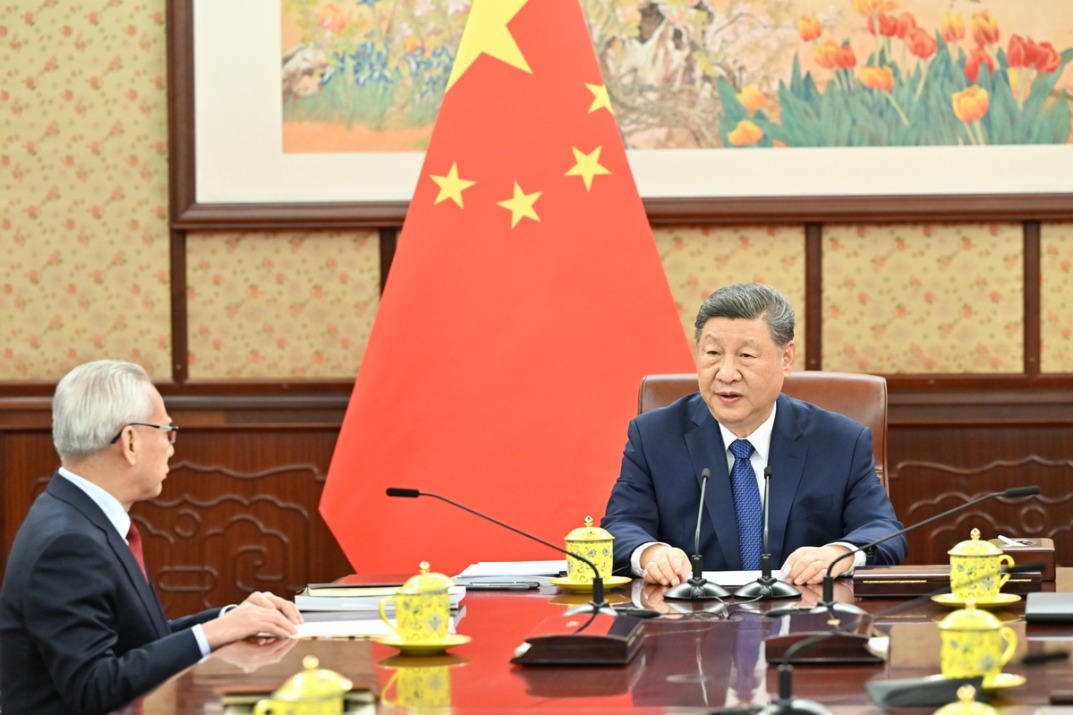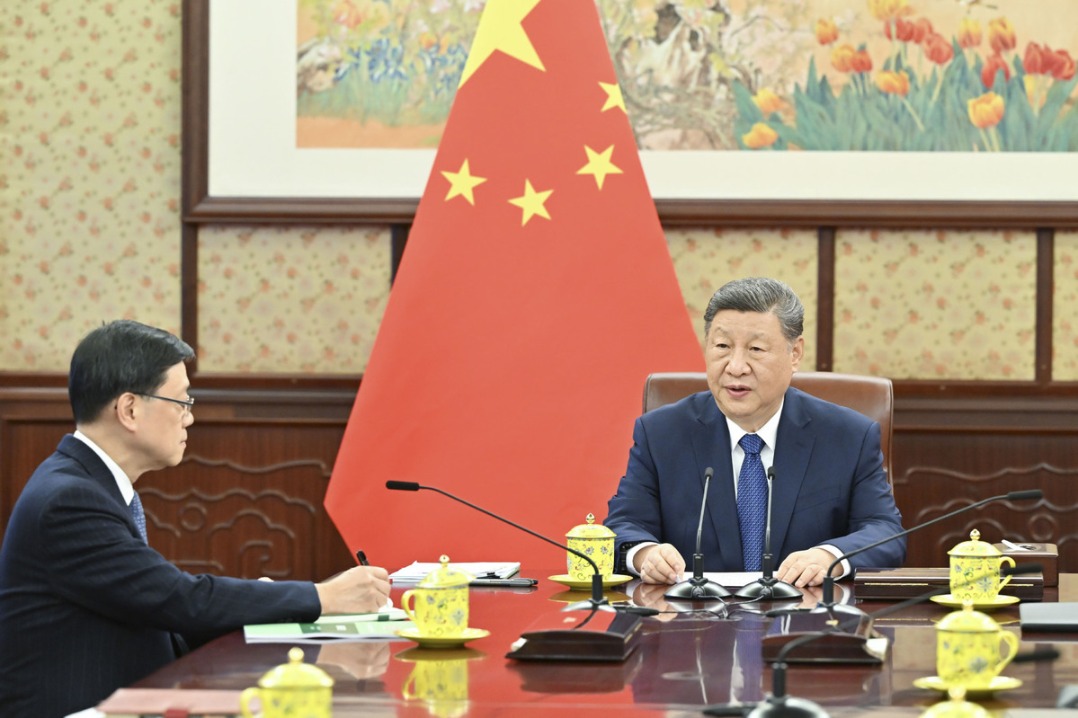Pudong expansion of museum continues apace
By Zhang Kun | CHINA DAILY | Updated: 2024-07-05 07:59

Addition of six new permanent galleries since February vastly increases institution's scope and appeal, Zhang Kun reports.
Shanghai Museum East reopened on June 26 after being closed for just over a month, with new galleries and more objects, and artifacts that invite visitors to touch and feel them.
The new wing of the Shanghai Museum had its soft opening on Feb 2 with the exhibition Stars Over China: The Ancient Shu Civilization of Sanxingdui and Jinsha. Upon its conclusion on May 20, the museum closed doors to carry on with the construction, decoration and preparation of additional galleries and spaces.
Including the Gallery for Ancient Chinese Sculpture and the Ancient Chinese Bronze Gallery, which opened in February, six permanent galleries of ancient Chinese art are now open in the east wing. The four new galleries are dedicated to ceramics, jade, seals, and numismatics.
Also open are two themed galleries, one on the history of Shanghai, and the other called China and the World: Ceramics and Exchanges, which explores the role porcelain played in the development of international trade and communications.
Four interactive spaces have also been introduced: Curio-City, an amusement-park-style gallery for young visitors, The Digital Gallery: Poetic Jiangnan, the Conservation Lab, and new merchandise shops.
"This is the second phase of the grand opening of the Shanghai Museum East," says Chu Xiaobo, director of the institution. "So far, we have finished 80 percent of the planned exhibition space, with 10 new galleries and interactive spaces open to the public."
Construction of the new wing of the Shanghai Museum has taken seven years. It received 1.05 million visitors during the first phase of its soft opening from Feb 2 to May 20. "This was far beyond our expectations. We are greatly moved and encouraged by people's love and support for the Shanghai Museum East," Chu says.
With the additional galleries and new exhibitions, the Shanghai Museum East will be able to receive more visitors every day. "People have complained about how difficult it was to secure a reservation to visit the new facility, so we have doubled the daily quota to 20,000. I believe this will largely relieve the pressure on the reservation system."
People can log into the museum's WeChat mini program, and make a reservation to visit the Shanghai Museum up to 14 days in advance.
The Shanghai Museum was founded in 1952 and had its first home at 325 Nanjing Road West, the location of the Shanghai Race Club in the 1930s. In 1959, the museum moved to 16 Henan Road South, another historical building dating to 1934.
In 1996, the new Shanghai Museum opened on People's Square. The building, with its square-shaped base and circular top is reminiscent of an ancient Chinese caldron. It has floor space of 39,300 square meters, with individual galleries dedicated to categories such as bronzes, sculpture, ceramics, paintings and calligraphy.
The new wing in Pudong New Area has a total floor space of 113,200 square meters, which has allowed the galleries to expand significantly in terms of the number of objects on display.
The ceramic hall is one of the four new galleries open to public. It contains 558 objects, about half of which are on display for the first time. "We decided to remove one of the exhibits from its glass cabinet and allow visitors to touch it," Chu says. "This is rarely done in museums in China, but we believe the multisensory experience of artifacts is important. It helps people better appreciate the detail and the craft of porcelain."
Peng Tao, deputy head of the ceramic department, says that museum was very careful in its selection of the piece to ensure it wouldn't be damaged. "It had to be an underglazed object because otherwise frequent touching could erase the pigments for an overglazed piece … Also, it couldn't be too light or thin, or too valuable."
The object finally selected is a blue-and-white porcelain vase dating to the Kangxi (1654-1722) period. "It demonstrates the main characteristics of blue-and-white porcelain of this particular period," Peng says. "We have arranged a special insurance policy, and are confident that visitors will appreciate and cherish the opportunity to touch it."
























